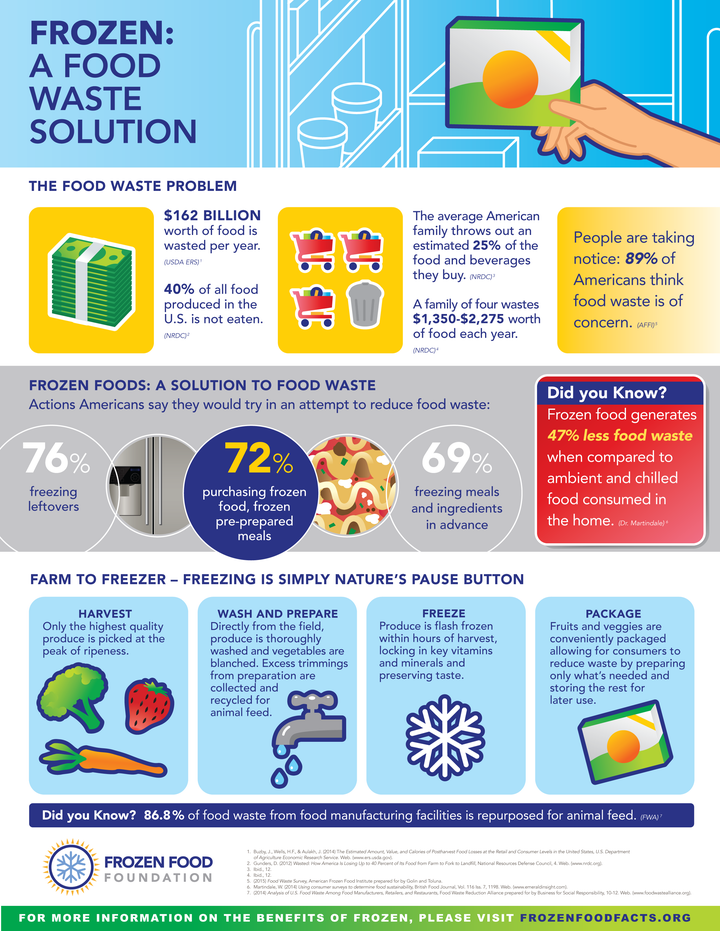The Huffington Post is challenging readers this July to combat America’s food waste problem by employing at-home waste-reduction strategies like buying only as much as you can eat, not discarding “imperfect”-looking foods, and rethinking expiration dates. But there’s another waste-reduction strategy that hasn’t been a prominent part of the conversation: buying and consuming frozen food.
The Frozen Food Foundation has a new infographic that explains the food waste problem and the role frozen plays in addressing it. I’ll share some of its details with you here.
About 40 percent of the food produced in the United States each year is never eaten, according to the Natural Resources Defense Council (NRDC). That means the water, fuel and labor that went into growing that food is also wasted. This staggering amount of waste equates to about $162 billion lost every year, according to the U.S. Department of Agriculture. And wasting money is hurting American families. The average American family throws away about 25 percent of the food it purchases in a year, so a family of four will end up losing between $1,350 and $2,275 worth of food annually, the NRDC says.
It’s no wonder that 89 percent of Americans said they were concerned about food waste in a survey conducted by the American Frozen Food Institute (AFFI).
Frozen food is a food waste solution that hasn’t received the attention it deserves. Freezing uneaten food extends its shelf-life, and buying already frozen food means that families can prepare only as much as they need. In fact, research published in the British Food Journal shows that frozen food generates 47 percent less food waste at home than non-frozen food, so families can save money while still eating healthy meals.
In addition to reducing food waste at home, buying frozen food is a great way to cut down on overall food waste. The frozen food industry has long been employing strategies to reduce food waste. Eighty-seven percent of the waste from the facilities that prepare frozen food is repurposed as animal feed. Buying frozen food is also a great way to support the movement to stop throwing away “ugly” fruits and vegetables that may not be aesthetically pleasing but are full of taste and nutrients. “Ugly” produce is often ignored by shoppers and thrown away, but these delicious fruits and vegetables are put to good use in frozen food.
In fact, a study from the University of California-Davis in partnership with the Frozen Food Foundation found that frozen fruits and vegetables are just as healthy – and sometimes more nutritious – than their fresh-stored counterparts because they are picked and frozen at their peak ripeness. In particular, the vitamin C content of frozen corn, green beans and blueberries was significantly higher than fresh produce.
For more tips and ideas about reducing food waste, visit savethefood.com, which was created by the Ad Council and the NRDC. This site has great information about which foods can be frozen and how best to freeze them. So next time you’re in the kitchen or the grocery store, think about all the ways that frozen foods and your freezer can help you reduce waste and save more.
And you can download a copy of our infographic, “Frozen: A Food Waste Solution,” as a reminder.
